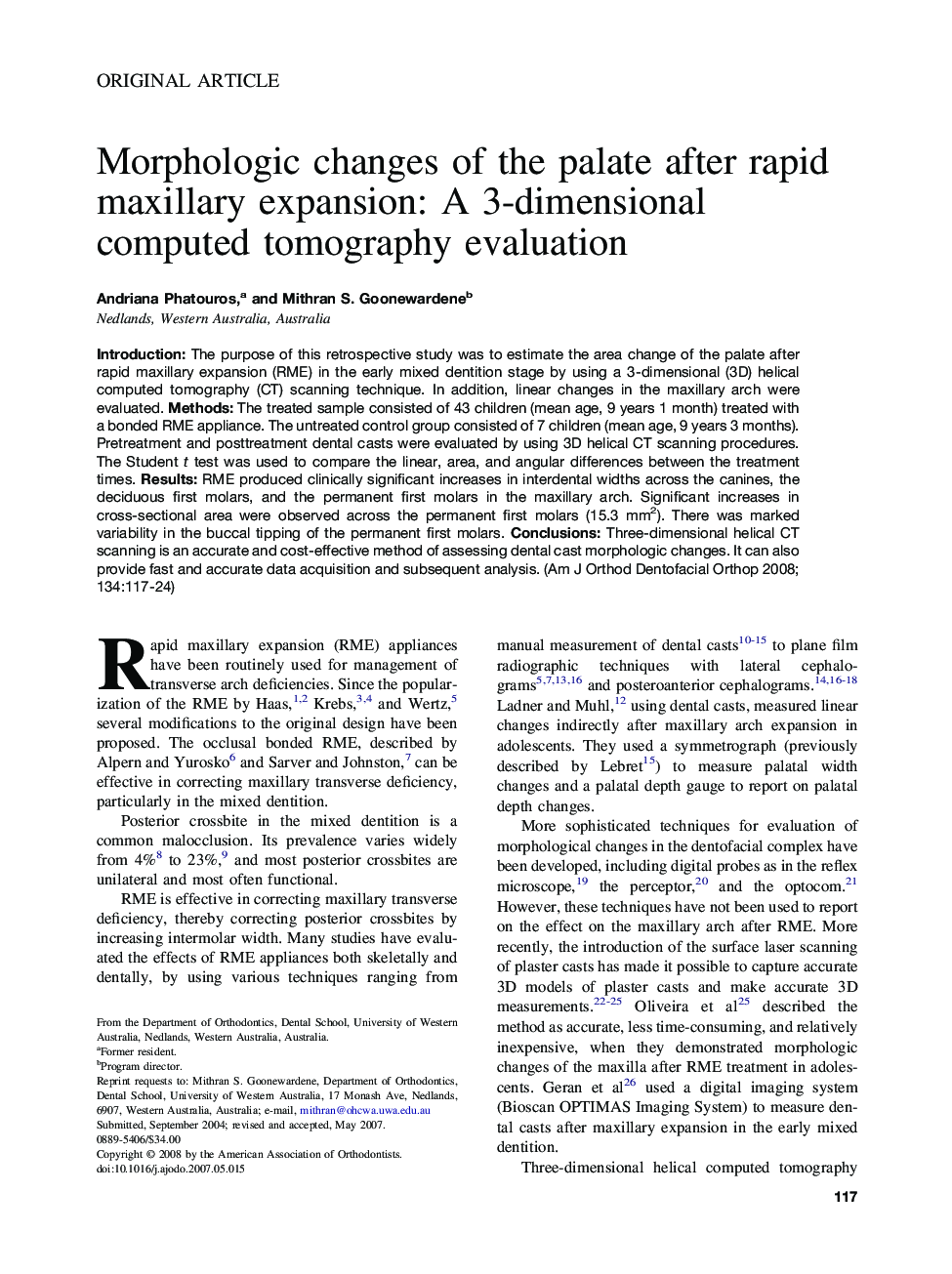| Article ID | Journal | Published Year | Pages | File Type |
|---|---|---|---|---|
| 3118894 | American Journal of Orthodontics and Dentofacial Orthopedics | 2008 | 8 Pages |
Introduction: The purpose of this retrospective study was to estimate the area change of the palate after rapid maxillary expansion (RME) in the early mixed dentition stage by using a 3-dimensional (3D) helical computed tomography (CT) scanning technique. In addition, linear changes in the maxillary arch were evaluated. Methods: The treated sample consisted of 43 children (mean age, 9 years 1 month) treated with a bonded RME appliance. The untreated control group consisted of 7 children (mean age, 9 years 3 months). Pretreatment and posttreatment dental casts were evaluated by using 3D helical CT scanning procedures. The Student t test was used to compare the linear, area, and angular differences between the treatment times. Results: RME produced clinically significant increases in interdental widths across the canines, the deciduous first molars, and the permanent first molars in the maxillary arch. Significant increases in cross-sectional area were observed across the permanent first molars (15.3 mm2). There was marked variability in the buccal tipping of the permanent first molars. Conclusions: Three-dimensional helical CT scanning is an accurate and cost-effective method of assessing dental cast morphologic changes. It can also provide fast and accurate data acquisition and subsequent analysis.
